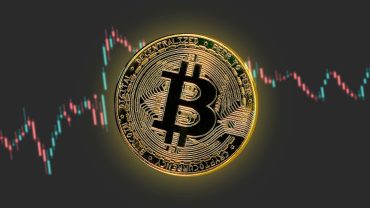U.S. stocks struggled on Thursday as optimism over booming AI chip demand clashed with fresh U.S.-China trade war jitters and rising uncertainty over the ongoing government shutdown.
The Dow Jones Industrial Average (^DJI) fell 0.6%, while the S&P 500 (^GSPC) slipped 0.4%. The tech-heavy Nasdaq Composite (^IXIC) hovered near flat, supported by chipmakers after Taiwan Semiconductor Manufacturing Company (TSMC) posted blockbuster quarterly earnings and raised its full-year outlook.
Market Movers:
- TSMC (TSM) — Shares rose 1.4% after the world’s largest contract chipmaker lifted its 2025 revenue forecast for the second time this year. TSMC reported a 40% surge in profit and record quarterly results, buoyed by booming demand for AI chips used in everything from data centers to consumer devices.
- Nvidia (NVDA) — The stock edged higher as TSMC’s upbeat results reinforced confidence in ongoing AI chip demand. Nvidia, one of TSMC’s largest customers, has been under pressure amid trade tensions but remains a bellwether for the AI rally.
- Broadcom (AVGO) — Shares ticked slightly higher following optimism that stronger chip manufacturing tailwinds will benefit the company’s custom accelerator business, which recently secured a deal with OpenAI to co-develop next-generation AI chips.
- American Battery Technology Company (ABAT) — Shares plunged more than 30% after the U.S. Department of Energy canceled a $52 million grant tied to the company’s lithium hydroxide production facility. The firm said it has appealed the decision and plans to continue the project on schedule.
- Hewlett Packard Enterprise (HPE) — The stock fell roughly 9% after the company’s guidance came in below Wall Street expectations. Management forecast slower revenue growth through 2026, even as it announced a 10% dividend hike and expanded share buyback plan.
AI Optimism Boosts Chips but Broader Market Stalls
Chip stocks led early gains as TSMC’s strong earnings demonstrated ongoing demand for AI infrastructure; however, enthusiasm cooled off as trade and macroeconomic fears were renewed. TSMC’s upbeat tone sent waves through the sector, helping offset concerns that U.S.-China tensions could threaten semiconductor supply chains.
The world’s leading foundry’s results also reinforced the narrative that the AI boom is here to stay. Nvidia, AMD, and Broadcom all moved higher on expectations that hardware spending will continue to grow through 2026. Still, with valuations stretched and political tensions rising, many investors took profits after a strong week for tech.
Trade War and Government Shutdown Add Headwinds
Markets remained cautious as President Trump reiterated that the U.S. and China are “in a trade war now,” lowering hopes of near-term de-escalation. While Treasury Secretary Scott Bessent hinted that the two sides could extend their fragile truce, investors remained wary of further tariffs and export controls that could weigh on global supply chains.
Meanwhile, the U.S. government shutdown entered its third week, pausing key data releases that investors and the Federal Reserve rely on to gauge the economy’s health. With the standoff likely to extend into November, traders are flying blind on inflation and labor data, further clouding the policy outlook.
Fed Calls for Caution
Federal Reserve Governor Chris Waller said Thursday he supports another quarter-point rate cut later this month but warned against moving too aggressively amid mixed signals in the economy. His remarks came as traders continue to price in at least one more rate cut before year-end, even with inflation still hovering above target.
Waller’s comments, paired with Fed Chair Jerome Powell’s recent acknowledgment of “downside risks” to employment, added to speculation that the central bank will maintain a flexible stance through the remainder of 2025.
Looking Ahead
Investors will turn their attention to upcoming corporate earnings and additional Fed commentary for clues about the economy’s trajectory. The combination of slowing data, policy uncertainty, and persistent geopolitical tension is likely to keep markets volatile in the near term. For now, Wall Street seems to be caught between the promise of an AI-powered economic cycle and the risks of political gridlock — a balancing act that could define the final stretch of 2025 trading.


